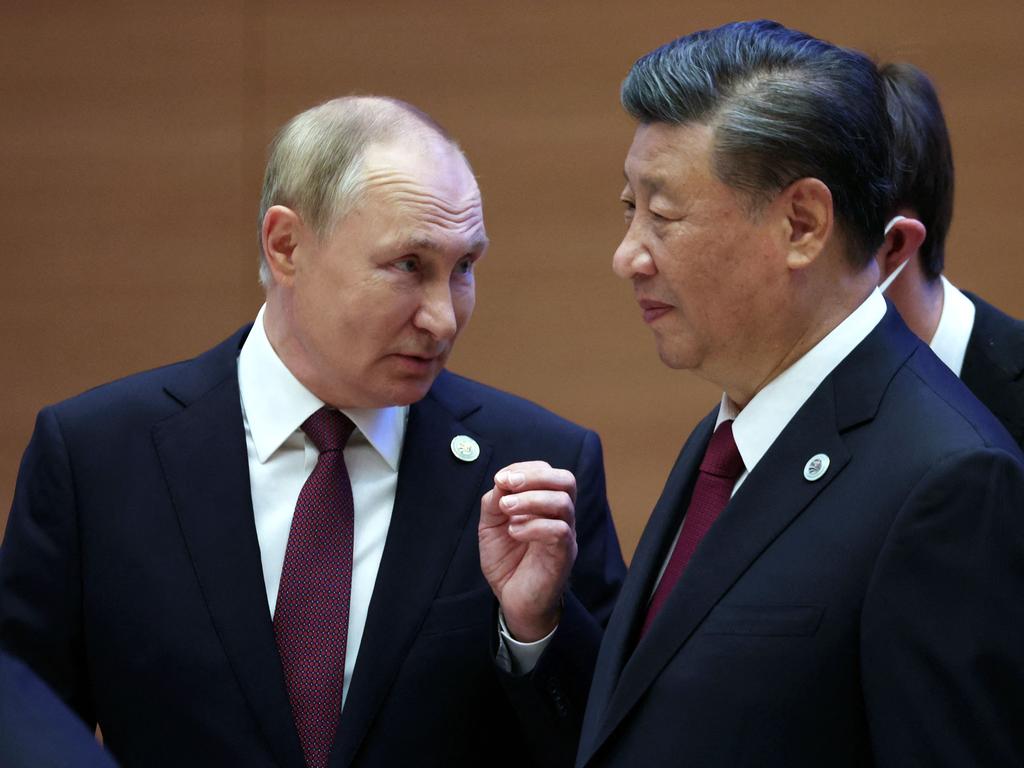Japan muscles up to neighbourhood bully China
Beijing’s aggression has forced Tokyo to reinterpret its pacificist constitution.

Late last month, Japan’s Prime Minister, Fumio Kishida, announced an order for 400 US-made Tomahawk cruise missiles for delivery in the next 12 months.
The weapons, which have a range of at least 1600km, will for the first time give the constitutionally pacifist state the ability to strike targets inside China.
A Japanese-developed standoff missile is also on Tokyo’s shopping list, together with advanced fighter jets, hypersonic weapons and armed drones.

As the Albanese government prepares urgently to overhaul Australia’s defence capabilities, Canberra’s “quasi ally” in Asia is implementing its own landmark national security strategy to deter an attack by China.
The strategy will fundamentally alter the strategic balance in East Asia and, it is hoped, affect Xi Jinping’s calculations on whether he will try to take Taiwan by force.
Under the plan, Japan will double defence spending to 2 per cent of GDP within five years, setting the world’s third-largest economy on a course to build a military to match its financial clout.
It will also boost diplomatic efforts by both engaging with China and working with like-minded countries such as Australia to pile pressure on Beijing to abide by global rules.
In a series of recent interviews with Japanese diplomats and strategists in Tokyo, The Weekend Australian was briefed on Kishida’s dramatic recasting of the nation’s defence policy, and the “nasty” strategic outlook that inspired it.
The policy casts China as Japan’s “greatest strategic challenge” and sets out how the country will harness all elements of national power to protect itself and strengthen regional peace.
Critically, it sets Japan on a course to acquire “counterstrike” capabilities to “deter an attack, or force an enemy to stop one”.
It allows Japan, for example, to base long-range anti-ship missiles on its southern islands, which could be used in the event of a Chinese invasion of Taiwan.

Keio University’s Professor Ken Jimbo tells The Weekend Australian in Tokyo that the elimination of restrictions allowing Japan to possess only defensive weapons will expand “the geography of our defence”, providing new military options for the Japanese Self-Defence Force.
“Chinese military leaders, whenever they think about the window of opportunity for their full-scale invasion towards Taiwan, they always calculate how the United States will respond,” Jimbo says.
“But now they also have to incorporate the Japanese capability, and that will stymie or at least complicate the strategic calculation of what they can do.”
China already spends five times more on armaments than Japan, and this week announced it would increase its defence budget by 7 per cent to about $330bn this year.
But Japan is not setting out to match China’s defence capabilities or its military spending. “Rather, what we have adopted is to explore the Chinese vulnerabilities, and how to deny China’s prospects of operational success,” Jimbo says.
“It is not about a balance-of-power type of deterrence. It is deterrence by denial. And this is the particularly important side of what we have decided so far.”
He cites war simulations by the US-based Rand Corporation, suggesting US forces would suffer heavy losses in a battle with China over Taiwan and potentially be defeated.
But a Chinese amphibious force attacking the self-governed island would also be highly vulnerable, Jimbo says, “so anti-ship missiles make a lot of sense in that kind of denial operation”.

Referring to East Asia’s indelible strategic geography, Jimbo says Japan hopes a concentrated and high-mobile missile force could confine Chinese naval forces within the “first island chain”, denying its ability to manoeuvre into the vast Western Pacific.
Article 9 of Japan’s constitution says the country will “forever renounce war as a sovereign right of the nation and the threat or use of force as means of settling international disputes”.
But the provision, a legacy of Japan’s WWII defeat, has been reinterpreted over time.
Former Japanese prime minister Shinzo Abe paved the way for the new security strategy, introducing legal changes in 2015 authorising the right of “collective self-defence” in a contingency – such as Chinese invasion of Taiwan – threatening Japan’s security.
At the time, tens of thousands of everyday Japanese people took to the streets to protest the change. But there has been little criticism of the Kishida government’s rearming of the nation, such is the widespread concern over China’s growing militarism and threats to the regional status quo.
Recent polls suggest a majority of Japanese support the military build-up, but public opinion hardens when questions turn to how the new capabilities will be paid for.
Japan’s vulnerability to Chinese attack was clearly illustrated in August when five Chinese missiles landed 100km off one of its inhabited southern islands. They were fired in protest at then US House speaker Nancy Pelosi’s visit to Taiwan.
The incident shook the Japanese public in a way that went well beyond China’s routine maritime incursions around Japan’s Senkaku Islands and its fighters’ regular overflight of Japan’s exclusive economic zone.
The former president of Japan’s National Defence Academy, Professor Ryosei Kokubun, says the Ukraine conflict was also a “wake-up call” for the Japanese people, helping to prepare them for the “revolutionary” policy shift.
“Very surprisingly, the Japanese audience is rather accepting (of the policy). Even the opposition parties,” Kokubun says.
“Pacifism is still strong in Japanese society. But the Japanese people, we decided this is very important. The crisis is coming now.”

Kokubun says the “essence” of the tensions between the majority of the world and China come down to values, and the inability of nations to trust Beijing because of its lack of transparency and the absence of the rule of law.
In response, Japan is unleashing a global diplomatic push to rally like-minded nations in support of global rules.
Its officials, so used to advocating for a “free and open Indo-Pacific”, now abbreviate the phrase simply as “FOIP”.
According to the strategy, Tokyo will “reinforce collaboration with as many countries as possible” to counter unilateral changes to the status quo and ensure Japan’s own security.
It will work with the US, but also Australia, India, Southeast Asia, Europe and even South Korea, with which it has had historically difficult relations.
In the grey halls of Japan’s Ministry of Foreign Affairs headquarters in Tokyo, senior officials speak of the “most severe strategic circumstances” in 70 years. But there is also a sense that Japan is seizing the moment.

As one official tells this masthead: “We have capabilities, we have alliances, we have like-minded partners.
“So when you talk to us, you are talking to all of those guys. We are strategically aligned with all of those partners. That is the core concept of our national security strategy.”
Japan’s relationship with Australia, in particular, is top-of-mind in Tokyo. Officials say the recent completion of a “reciprocal access agreement” for the nations’ militaries, finalised last year, will turbocharge joint training opportunities and in time may lead to the rotational deployment of Japanese forces in Australia.
The Australia-Japan agreement has paved the way for the rapid negotiation of a similar pact with the UK, while The Philippines is also interested in the potential for such a deal.
As Japan and its partners work to maintain the strategic balance in Asia, the Quad – the strategic partnership that draws together the US, Japan, Australia and India – will play an increasingly important role.

A senior Japanese Foreign Ministry official says the grouping is “a driving force” to secure a free and open Indo-Pacific, and a vehicle for tangible regional co-operation.
India, in particular, is a vital partner, with the strategic weight to help counter China.
“Constant co-ordination with India is beneficial for us to foster their understanding of our strategic view,” the official says.
Japan’s former ambassador in Jakarta, Professor Masafumi Ishii, points to the fact that India will surpass Japan in GDP terms sometime in the 2030s, giving it a level of strategic clout close to that of the US and China.
Ishii says the “G3” bloc – the US, China and India – “will decide the basic direction of international politics” within 10 to 15 years. Looking further out, he points to Indonesia likely becoming the world’s fifth-largest economy by the 2040s.
Both countries “will never ally with anyone”, but being closer to them than China and Russia will help the US, Japan and their partners to “decide, more or less, the global opinion”.
“So what we can do is to keep on doing something good for them. Keep on working on them. So that if something happens, their position will be closer to us rather than to them,” Ishii says.








To join the conversation, please log in. Don't have an account? Register
Join the conversation, you are commenting as Logout